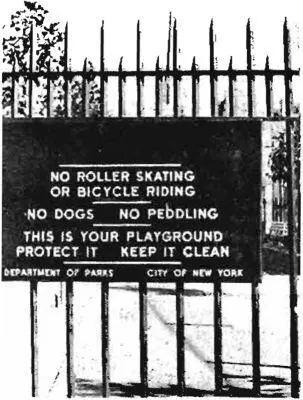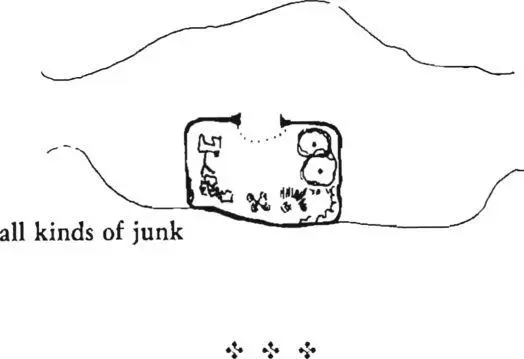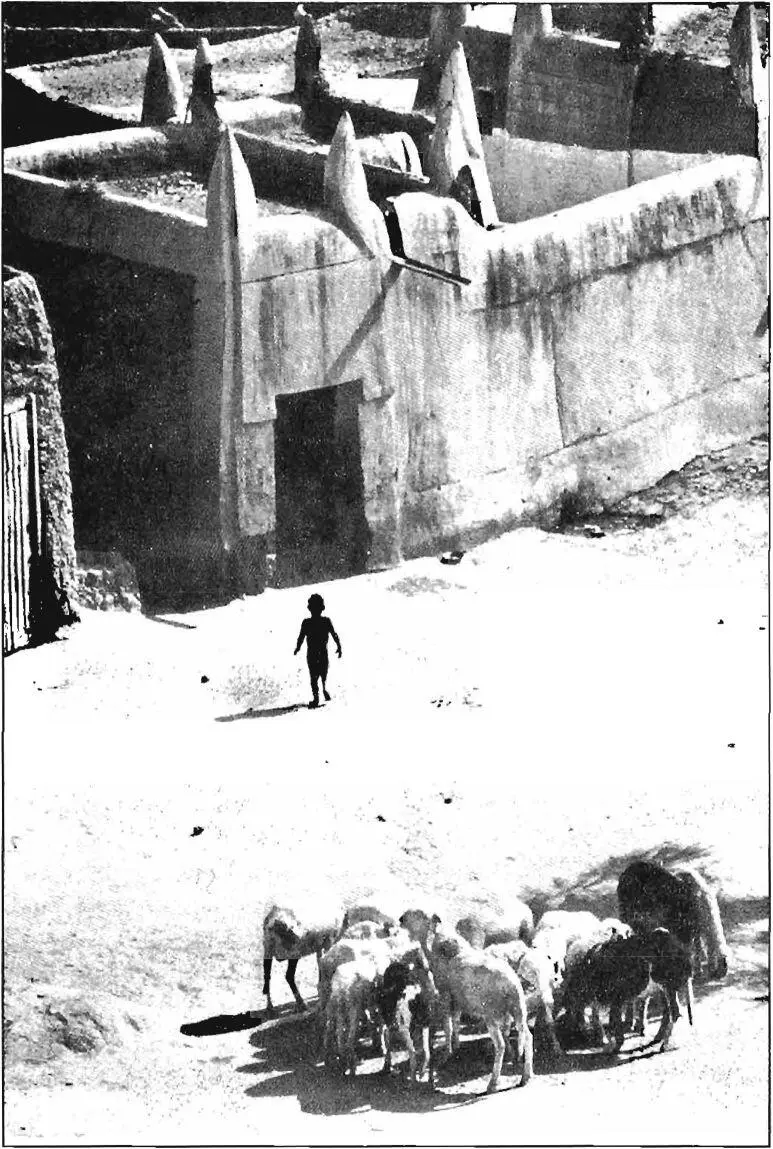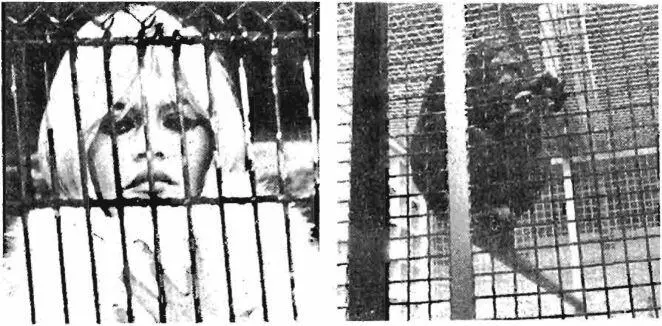Christopher alexander - A pattern language
Здесь есть возможность читать онлайн «Christopher alexander - A pattern language» весь текст электронной книги совершенно бесплатно (целиком полную версию без сокращений). В некоторых случаях можно слушать аудио, скачать через торрент в формате fb2 и присутствует краткое содержание. Жанр: Прочая научная литература, на английском языке. Описание произведения, (предисловие) а так же отзывы посетителей доступны на портале библиотеки ЛибКат.
- Название:A pattern language
- Автор:
- Жанр:
- Год:неизвестен
- ISBN:нет данных
- Рейтинг книги:3 / 5. Голосов: 1
-
Избранное:Добавить в избранное
- Отзывы:
-
Ваша оценка:
- 60
- 1
- 2
- 3
- 4
- 5
A pattern language: краткое содержание, описание и аннотация
Предлагаем к чтению аннотацию, описание, краткое содержание или предисловие (зависит от того, что написал сам автор книги «A pattern language»). Если вы не нашли необходимую информацию о книге — напишите в комментариях, мы постараемся отыскать её.
A pattern language — читать онлайн бесплатно полную книгу (весь текст) целиком
Ниже представлен текст книги, разбитый по страницам. Система сохранения места последней прочитанной страницы, позволяет с удобством читать онлайн бесплатно книгу «A pattern language», без необходимости каждый раз заново искать на чём Вы остановились. Поставьте закладку, и сможете в любой момент перейти на страницу, на которой закончили чтение.
Интервал:
Закладка:
 |
| 367 |
. . . inside the local neighborhood, even if there is common land where children can meet and play—common land (67), connected play (68) ; it is essential that there be at least one smaller part, which is differentiated, where the play is wilder, and where the children have access to all kinds of junk.
•J* tj*
A castle, made of cartons, rocks, and old branches, by a group of children for themselves, is worth a thousand perfectly detailed, exactly finished castles, made for them in a factory.
Play has many functions: it gives children a chance to be together, a chance to use their bodies, to build muscles, and to test new skills. But above all, play is a function of the imagination. A child’s play is his way of dealing with the issues of his growth, of relieving tensions and exploring the future. It reflects directly the problems and joys of his social reality. Children come to terms with the world, wrestle with their pictures of it, and reform these pictures constantly, through those adventures of imagination we call play.
Any kind of playground which disturbs, or reduces, the role of imagination and makes the child more passive, more the recipient of someone else’s imagination, may look nice, may be clean, may be safe, may be healthy—but it just cannot satisfy the fundamental need which play is all about. And, to put it bluntly, it is a waste of time and money. Huge abstract sculptured play-lands are just as bad as asphalt playgrounds and jungle gyms. They are not just sterile; they are useless. The functions they perform have nothing to do with the child’s most basic needs.
This need for adventurous and imaginative play is taken care of handily in small towns and in the countryside, where children have access to raw materials, space, and a somewhat comprehensible environment. In cities, however, it has become a pressing concern. The world of private toys and asphalt playgrounds does not provide the proper settings for this kind of play.
The basic work on this problem has come from Lady Allen of
| 73 adventure playground |
|---|
 |
| No 'flaying. |
Hurtwood. In a series of projects and publications over the past twenty years, Lady Allen has developed the concept of the adventure playground for cities, and we refer the reader, above all, to her work. (See, for example, her book, Planning for Play> Cambridge: MIT Press, 1968.) We believe that her work is so substantial, that, by itself, it establishes the essential pattern for neighborhood playgrounds.
Colin Ward has also written an excellent review, “Adventure Playgrounds: A Parable of Anarchy,” Anarchy 7, September 1961. Here is a description of the Grimsby playground, from that review:
At the end of each summer the children saw up their shacks and shanties into firewood which they deliver in fantastic quantities to old age pensioners. When they begin building in the spring, “it’s just a hole in the ground—and they crawl into it.” Gradually the holes give way to two-storey huts. Similarly with the notices above their dens. It begins with nailing up “Keep Out” signs. After this come more personal names like “Bughold Cave” and “Dead Man’s Cave,” but by the end of the summer they have communal names like “Hospital” or “Estate Agent.” There is an everchanging range of activities due entirely to the imagination and enterprise of the children themselves. . . .
Therefore:
Set up a playground for the children in each neighborhood. Not a highly finished playground, with asphalt and
swings, but a place with raw materials of all kinds—nets, boxes, barrels, trees, ropes, simple tools, frames, grass, and water—where children can create and re-create playgrounds of their own.

Make sure that the adventure playground is in the sun— sunny place (161) ; make hard surfaces for bikes and carts and toy trucks and trolleys, and soft surfaces for mud and building
things-BIKE PATHS AND RACKS (56), GARDEN GROWING WILD
(172), CHILD CAVES (203); and make the boundary substantial with a GARDEN WALL ( I 73) or SITTING WALL (243) . . . .
| 74 ANIMALS |
|---|
 |
. . . even when there is public land and private land for individual buildings—common land (67), your own home (79), there is no guarantee that animals can flourish there. This pattern helps to form green streets (51) and common land (67) by giving them the qualities they need to sustain animal life.
Animals are as important a part of nature as the trees and grass and flowers. There is some evidence, in addition, which suggests that contact with animals may play a vital role in a child’s emotional development.
Yet while it is widely accepted that we need “parks”—at least access to some kind of open space where trees and grass and flowers grow—we do not yet have the same kind of wisdom where sheep, horses, cows, goats, birds, snakes, rabbits, deer, chickens, wildcats, gulls, otters, crabs, fish, frogs, beetles, butterflies, and ants are concerned.
Ann Dreyfus, a family therapist in California, has told us about the way that animals like goats and rabbits help children in their therapy. She finds that children who cannot make contact with people, are nevertheless able to establish contact with these animals. Once this has happened and feelings have started to flow again, the children’s capacity for making contact starts to grow again, and eventually spreads out to family and friends.
But animals are almost missing from cities. In a city there are, broadly speaking, only three kinds of animal: pets, vermin, and animals in the zoo. None of these three provides the emotional sustenance nor the ecological connections that are needed. Pets are pleasant, but so humanized that they have no wild free life of their own. And they give human beings little opportunity to experience the animalness of animals. Vermin—rats, cockroaches —are animals which are peculiar to cities and which depend ecologically on miserable and disorganized conditions, so they are naturally considered as enemies. Animals in the zoo are more or less inaccessible to most of the human population—except as
occasional curiosities. Besides, it has been said that animals living under the conditions which a zoo provides are essentially psychotic —that is, entirely disturbed from their usual mode of existence— so that it is probably wrong to keep them there—and certainly they can in no way re-create the missing web of animal life which cities need.
 |
| Looking in or looking out — what’s the difference? |
It is perfectly possible to reintroduce animals into the natural ecology of cities in a useful and functioning sense, provided that arrangements are made which allow this and do not create a nuisance.
Читать дальшеИнтервал:
Закладка:
Похожие книги на «A pattern language»
Представляем Вашему вниманию похожие книги на «A pattern language» списком для выбора. Мы отобрали схожую по названию и смыслу литературу в надежде предоставить читателям больше вариантов отыскать новые, интересные, ещё непрочитанные произведения.
Обсуждение, отзывы о книге «A pattern language» и просто собственные мнения читателей. Оставьте ваши комментарии, напишите, что Вы думаете о произведении, его смысле или главных героях. Укажите что конкретно понравилось, а что нет, и почему Вы так считаете.












